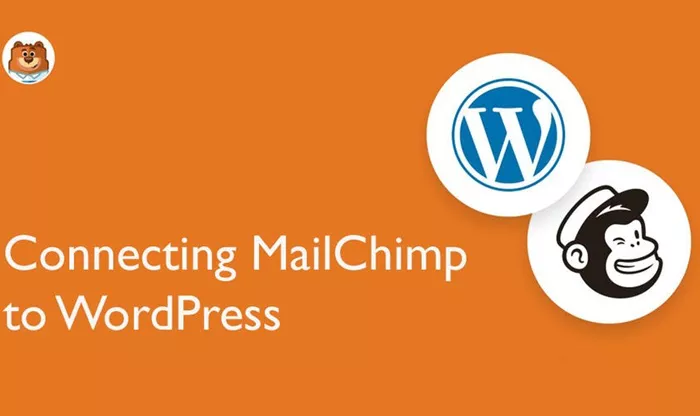Mailchimp is one of the most popular email marketing platforms, offering an array of tools for businesses to engage with their audience effectively. WordPress, as a leading content management system, is widely used by bloggers, entrepreneurs, and businesses alike. Integrating Mailchimp with WordPress allows users to collect email subscribers directly from their website, automate email campaigns, and track user interactions. This article provides a detailed, step-by-step guide on how to connect Mailchimp to WordPress.
Why Connect Mailchimp to WordPress?
Integrating Mailchimp with WordPress offers numerous benefits, including:
Email List Growth – Enables users to collect email addresses from website visitors effortlessly.
Automated Email Campaigns – Streamlines communication with subscribers through scheduled emails.
User Engagement Tracking – Provides insights into how subscribers interact with emails.
Enhanced Marketing Strategies – Allows for audience segmentation and targeted messaging.
Improved Conversion Rates – Helps nurture leads and convert visitors into loyal customers.
Now, let’s explore how to set up this integration seamlessly.
Step 1: Create a Mailchimp Account
If you do not have a Mailchimp account, you will need to create one:
Visit the Mailchimp website.
Click on “Sign Up Free” and enter your details.
Verify your email address and complete the registration process.
Log in to your Mailchimp dashboard.
Once your account is set up, you will need to create an audience (email list) to collect and manage your subscribers.
Step 2: Create an Audience in Mailchimp
Mailchimp organizes email subscribers into an audience. To create one:
Navigate to the “Audience” section in the Mailchimp dashboard.
Click on “Create Audience” and provide a name for it.
Fill in details such as sender name, email address, and contact information.
Enable GDPR fields if necessary.
Click “Save” to finalize your audience setup.
Your audience is now ready to collect email subscribers.
Step 3: Choose a Mailchimp Integration Method for WordPress
There are multiple ways to integrate Mailchimp with WordPress:
Using a Mailchimp Plugin (Recommended for beginners)
Manually Embedding Mailchimp Forms
Using Third-Party Form Builders (e.g., WPForms, Elementor, Contact Form 7)
Utilizing Mailchimp API (For advanced users and developers)
Let’s explore each method in detail.
Step 4: Integrate Mailchimp Using a Plugin
The easiest and most effective way to connect Mailchimp to WordPress is by using a plugin.
Install a Mailchimp Plugin
Log in to your WordPress dashboard.
Go to “Plugins” and click “Add New.”
Search for “Mailchimp for WordPress.”
Click “Install” and then “Activate.”
Connect Mailchimp to WordPress
Go to the plugin settings.
Click on “Get Your API Key” (found in Mailchimp under “Account” > “Extras” > “API Keys”).
Copy the API key and paste it into the plugin settings.
Save changes.
Create and Embed Signup Forms
Navigate to the “Forms” section of the plugin.
Design your email signup form.
Copy the shortcode provided and paste it into a WordPress post, page, or widget.
This method is user-friendly and requires no coding knowledge.
Step 5: Manually Embed Mailchimp Forms in WordPress
If you prefer not to use a plugin, you can embed a Mailchimp signup form manually.
Create a Signup Form in Mailchimp
Go to “Audience” > “Signup Forms.”
Select “Embedded Forms.”
Customize the form appearance and copy the provided HTML code.
Add the Form to WordPress
Open WordPress and go to “Appearance” > “Widgets.”
Add a “Custom HTML” widget to your sidebar or footer.
Paste the copied Mailchimp form code and save.
This method gives more customization control but requires some HTML knowledge.
Step 6: Integrate Mailchimp with Third-Party Form Builders
If you are using a form builder like WPForms, Elementor, or Contact Form 7, you can integrate Mailchimp with these tools.
Install and Activate the Form Builder Plugin
Search for your preferred form plugin in the WordPress plugin directory.
Install and activate it.
Connect to Mailchimp
Go to the plugin’s settings.
Find the Mailchimp integration option and enter your API key.
Link your form fields to Mailchimp audience fields.
Embed the Form on Your Website
Create a form with an email field.
Add it to a page, post, or widget using the provided shortcode or block.
This method is ideal for users who already use form builders on their site.
Step 7: Use the Mailchimp API for Advanced Integration
For developers looking for a more customizable approach, the Mailchimp API provides greater flexibility.
Generate an API Key
Go to Mailchimp’s API settings and create a new key.
Use the API to Connect WordPress
Implement API calls to send subscriber data to Mailchimp.
Customize form handling and automation as per your needs.
This method requires coding skills but offers advanced integration possibilities.
Step 8: Test the Mailchimp Integration
After integrating Mailchimp with WordPress, ensure everything is working properly:
Submit a Test Email – Use the signup form to enter a test email and verify it appears in Mailchimp.
Check Email Confirmation – Ensure subscribers receive a confirmation email.
Monitor Analytics – View Mailchimp’s dashboard to track signups and engagement.
If issues arise, check your API key, form settings, and plugin configurations.
Conclusion
Connecting Mailchimp to WordPress is essential for businesses and content creators aiming to grow their email lists and enhance marketing efforts. Whether you choose to integrate Mailchimp using a plugin, manually embed forms, or leverage third-party tools, the process is straightforward and highly beneficial. By following the steps outlined in this guide, you can seamlessly connect Mailchimp to your WordPress site and start engaging with your audience more effectively.
Related Topics
- How To Check Site Visits On WordPress?
- How to Check PHP Version in WordPress?
- How to Check Pageviews on WordPress?

